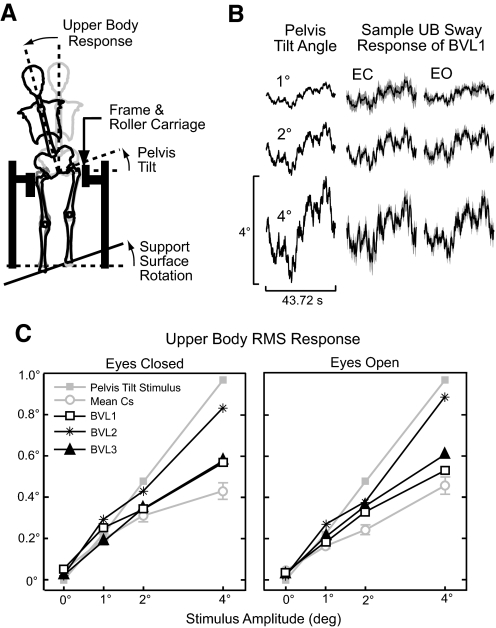Fig. 1.
Upper body (UB) sway responses to pelvis tilt stimuli. A: surface rotations produced pelvis tilts that evoked UB sway while the lower body was prevented from moving laterally. B: Mean (±95% confidence intervals) UB sway from 1 bilateral vestibular loss (BVL) subject. C: root-mean-square (RMS) UB sway as a function of stimulus amplitude for individual BVLs and the mean (±1 SE) of control subjects (Cs).

